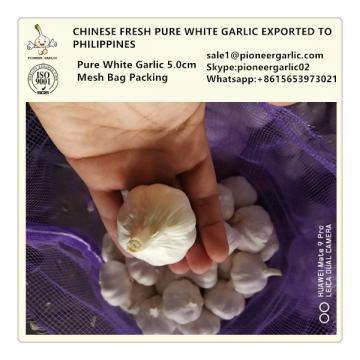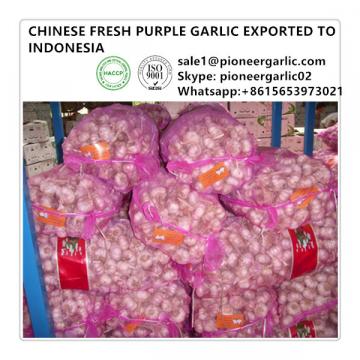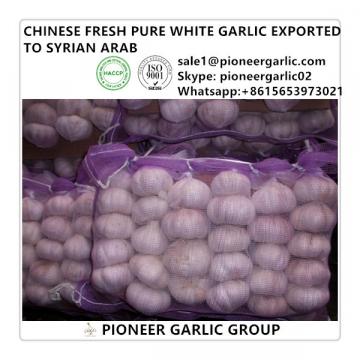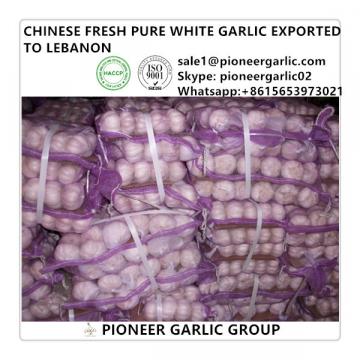Home> Company News> How Garlic Prevents Frost
- AddressDACHENGLOU VILLAGE MAMIAO TOWN, JINXIANG COUNTY,CHINA
- Factory AddressDACHENGLOU VILLAGE MAMIAO TOWN, JINXIANG COUNTY,CHINA
- Worktime9:00-17:00 (Beijing time)
- Phone(Working Time)86-0537-7201661
- Phone(Nonworking Time)86-15562397099
- Fax86-0537-7201661
How Garlic Prevents Frost
2020-05-22 11:25:39First, analyze the reasons for the frost damage of garlic
1. Extremely cold weather
Garlic is a relatively cold-resistant crop and can withstand short-term low temperature of -10 ℃. If the temperature is lower than -10 ℃ for a long time, or in extremely low temperature weather, the garlic will easily be killed by freezing.
2. Variety
Different garlic varieties have different tolerances to low temperatures, and white-skinned garlic has strong cold resistance, such as Laiwu white-skin. Some varieties are less resistant to cold, such as Lujiao No. 2. Some varieties are planted all year round, with severe degradation and cold resistance will become worse and worse, which will easily cause winter damage.
3. Partial application of chemical fertilizers, low organic matter content in soil
Because garlic has a shallow root system, less fibrous roots, weaker root absorption capacity, and higher soil requirements, the soil suitable for cultivation must be rich in organic matter and have good air permeability. If long-term partial application of chemical fertilizers causes soil compaction, it is also easy to cause garlic root failure and poor cold resistance.
4. Early sowing date
The response of different varieties of garlic to the low temperature has a certain difference. The young plants have the highest cold resistance when they have 4-5 leaves. This is the most suitable wintering seedling age for autumn sowing garlic. The annual sowing time of northern garlic is generally concentrated in late September, but with the popularization of mulch cultivation area and the increasing temperature before winter, the garlic planted during this period often grows vigorously before winter, making the plant grow to 7-8 Above the leaves, some can reach 9 leaves, so the frost resistance is weakened, and it is easy to cause large-area freezing damage. In addition, with the increase of planting area, some garlic farmers started early to save labor costs, which led to the sowing date being continuously advanced. This is more prone to freezing damage.
5, shallow seeding
Garlic is suitable for shallow sowing, otherwise the emergence is late, the seedlings are weak, and the pumping is late. The suitable depth is 3-4cm for ridge and 2-3cm for ridge. Part of the straw was returned to the field and the land was cultivated. The cracks were not good, the soil was loose, and the seeding was too shallow.
Second, garlic antifreeze technology
1.Update and replace garlic seeds
In recent years, the frost damage of garlic in some areas has been severe, which has caused great losses to garlic farmers. One of the reasons is that garlic has a single variety and a long planting time. The characteristics of garlic varieties have deteriorated, resulting in poor stress resistance, reduced yield performance and disease resistance. In order to reduce losses and improve the disease resistance and high yield of garlic, fine varieties can be introduced for replacement according to specific conditions. According to the comparative test of varieties in recent years, Jinxiang No. 1 and Lai garlic series have good yield performance and stress resistance. It is recommended that garlic farmers actively choose them.
2. Fine land preparation, mastering the sowing depth
After the previous crop is harvested, the land should be plowed in time. Generally, deep ploughing is more than 20cm. After deep ploughing, do not harrow the soil immediately, and let the soil be exposed to the sun. After a few days, come and harrow it down to make the soil reach the upper Panasonic, without light and dark. In recent years, garlic farmers have been accustomed to rotary farming. The plow layer is only about ten centimeters. The bottom of the plough cannot be broken. It is recommended that the plough be deepened at least every two years to facilitate the root system to improve the resistance of garlic. Sowing depth is controlled at 2-3cm, too deep is not conducive to emergence, too shallow frost resistance is weakened.
3. Formula the base fertilizer
Film-covered garlic is not convenient for topdressing, and base fertilizer should be used in combination with topdressing. Fertilization should be mainly based on farm manure, supplemented by chemical fertilizers, a small amount of multiple times, combined with nitrogen, phosphorus, and potassium, and increased application of microbial fertilizer.
Before ploughing the land, apply 2-3 m / mu of rotten chicken manure, or 4-5 m / mu of high-quality rotten manure. Level the rake finely (the diameter of the soil block should be less than 3cm) and do the hoeing. After the flat surface is leveled, the quick-acting chemical fertilizer is applied. The application amount depends on the soil strength. The medium-fertility soil can be coated with urea 20kg / mu, diammonium phosphate 25kg / mu, potassium sulfate 30kg / mu, or controlled release compound fertilizer 100kg / Mu, 5-8kg / mu of compound micro-fertilizer.
It can be sprayed with a "no-deep tillage" soil conditioner before sowing after tidying. First, it can change the soil aggregate structure, improve the soil environment for garlic growth, and improve quality and commerciality. Second, it can improve the stress resistance of garlic and reduce the frost damage and disease caused by garlic.
4. Sowing
Sowing at proper time to ensure that the garlic seedlings reach 5 leaves, 1 heart to 6 leaves before the winter of garlic. At this time, the cold resistance of garlic is strong to ensure the winter of strong seedlings.
5, pouring winter water.
Garlic is a wintering crop. Just like wheat, it should be reasonably cautiously poured in winter water to make garlic safely overwinter. When watering, you should choose a fine day after the frozen day disappears for three to five days before the land is closed. The time should be 10 to 10 am in the morning and small in water before 4 pm. Flooding is strictly prohibited. And timely clean up the floating soil on the mulch, which will help the garlic field fully absorb the sunlight and save the ground temperature.
6. Check the mulch in time to prevent it from being lifted by the wind. Due to the strong winter wind, the mulch covered with garlic was inspected in time, and it was found that it was lifted by the wind, and it should be repaired as soon as possible.
7. Spray amino acid foliar fertilizer
Spraying amino acid foliar fertilizer before wintering can greatly improve the frost resistance and wintering resistance of garlic.
8. Promote "Double Film Coverage"
The "dual film covering" mode of garlic can effectively resist the frost damage of garlic in winter. Main technical points:
①The first time it was covered with a seed. The same as conventional mulch cultivation.
② Laminating for the second time before overwintering. After the heavy snowfall, or according to the forecast of the meteorological department, when the average temperature dropped below zero and the aboveground parts of garlic have been dormant and stopped growing, a second mulch was performed. When covering the film, pay attention to the soil on both sides of the film, and do not over-tighten it to give the garlic a suitable space.
Before covering the film, check it in the garlic field first, and hook the garlic seedlings without the film out of the film with wire hooks.
Because there are many northwest winds in winter, when the film is started, the film is released from the south to the east and the east from the south.
③ In the greening period, the second layer of film is usually removed in early March of the following year.
China garlic suppliers provide consumers around the world with reasonable China Garlic Price and high quality garlic and garlic products.
 Chinese Fresh Red Garlic Exported to Philippines Market
Chinese Fresh Red Garlic Exported to Philippines Market Chinese Fresh Red Garlic Exported to Philippines Market
Chinese Fresh Red Garlic Exported to Philippines Market Chinese Fresh Normal White 5.0cm Red Garlic Exported to Indonesia
Chinese Fresh Normal White 5.0cm Red Garlic Exported to Indonesia Chinese Fresh 5.0cm Normal White Garlic Exported to Syrian Arab Market
Chinese Fresh 5.0cm Normal White Garlic Exported to Syrian Arab Market Chinese Fresh Red Garlic Exported to Lebanon Market
Chinese Fresh Red Garlic Exported to Lebanon Market
